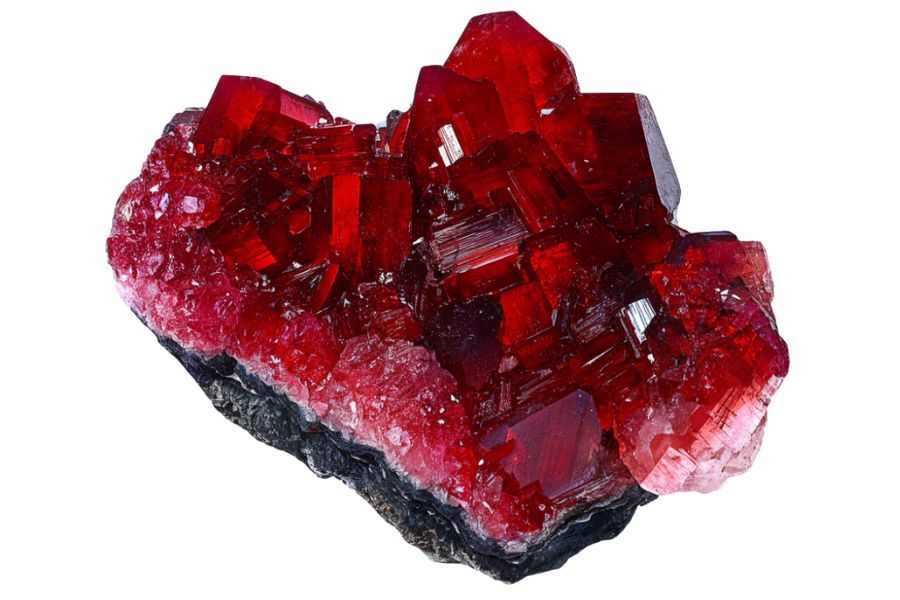California isn’t just famous for gold, it’s also home to some of the finest garnet deposits in the country. From the deep red almandine to the rare bright green andradite, these gemstones hide in riverbeds, mountain slopes, and even desert plains.
But rockhounds make a big mistake by searching in all the wrong places. Many rock collectors spend hours at random sites, only to leave empty-handed. They miss out on prime locations simply because they don’t know where to look.
That’s why we’ve done the hard work for you, sourcing the best places to find garnet in California. Save time, energy, and frustration so you can focus on what matters, finding pieces worth bringing home.
We’ll walk you through everything needed to spot garnets with confidence, and the only real backup you’ll want is Rock Chasing’s California Rocks & Minerals Identification Field Guide. It keeps you from missing something special in the field or walking right past a great find without realizing it.
How Garnet Forms Here
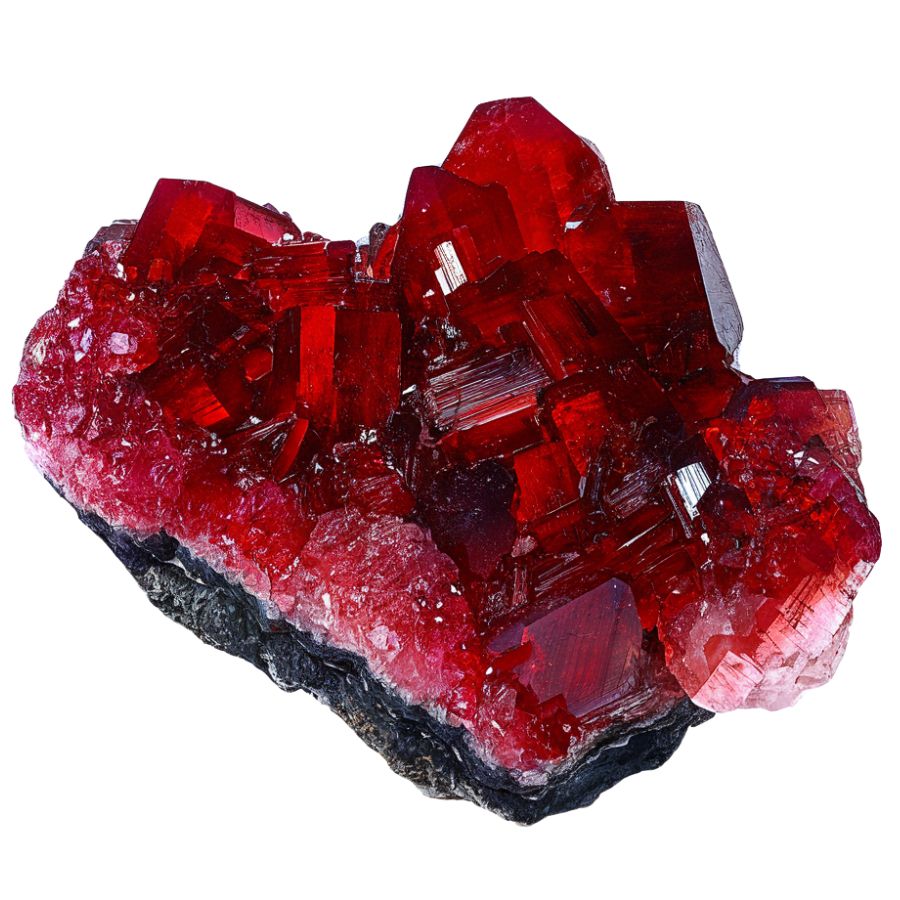
Garnet forms deep underground when rocks get squeezed and heated during metamorphism. Think of it like baking cookies – but instead of dough, you’ve got minerals like aluminum, iron, and silica getting cooked under intense pressure.
When these minerals reach temperatures around 400-700°C, they start rearranging their atoms into garnet’s distinctive crystal structure.
What’s cool is that garnets often grow by pushing other minerals out of the way! That’s why they form those perfect geometric shapes.
Most garnets need high pressure too, which is why they’re usually found in rocks that were once buried miles beneath the surface. The slower they grow, the bigger and clearer they become – some taking millions of years to reach their full size.
Types of Garnets
Garnets are captivating gemstones that showcase an impressive range of colors and varieties, each determined by their unique chemical composition. Understanding these differences helps in identifying the stone’s value.
Almandine Garnet
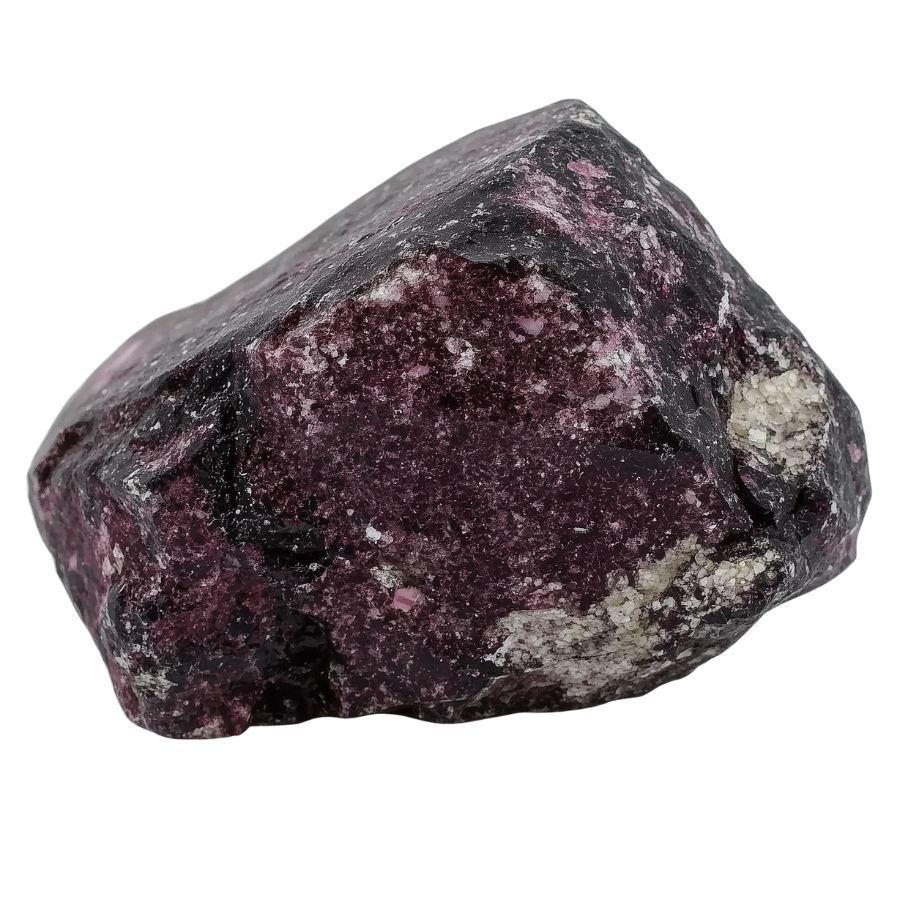
Almandine garnet stands out with its rich, deep red to reddish-brown color. The stone sometimes shows hints of orange or brown, making each piece unique. Its color intensity remains consistent throughout the stone, creating a beautiful depth that catches the eye.
The crystal structure of almandine follows a perfect cubic pattern, forming well-defined shapes with smooth faces. This symmetry contributes to its striking appearance and helps light bounce through the stone evenly.
What makes almandine special is its high iron content, which gives it a higher specific gravity than other garnets. This means it feels slightly heavier in your hand compared to similar-sized stones. Its refractive index of 1.74 to 1.83 creates excellent brilliance and fire.
Most almandine garnets are remarkably clear, though some may contain natural inclusions that create interesting patterns. These patterns can add character to the stone without affecting its overall beauty or durability.
Most people don’t realize how many incredible rocks California hides in its mountains, deserts, and beaches. This guide shows exactly what you’ve been walking past.
🌈 300+ color photos of real California specimens
🪨 Raw + polished examples make identification simple
🏜️ Covers coastlines, gold country, Sierras & more
💦 Waterproof pages built for real outdoor use
Pyrope Garnet
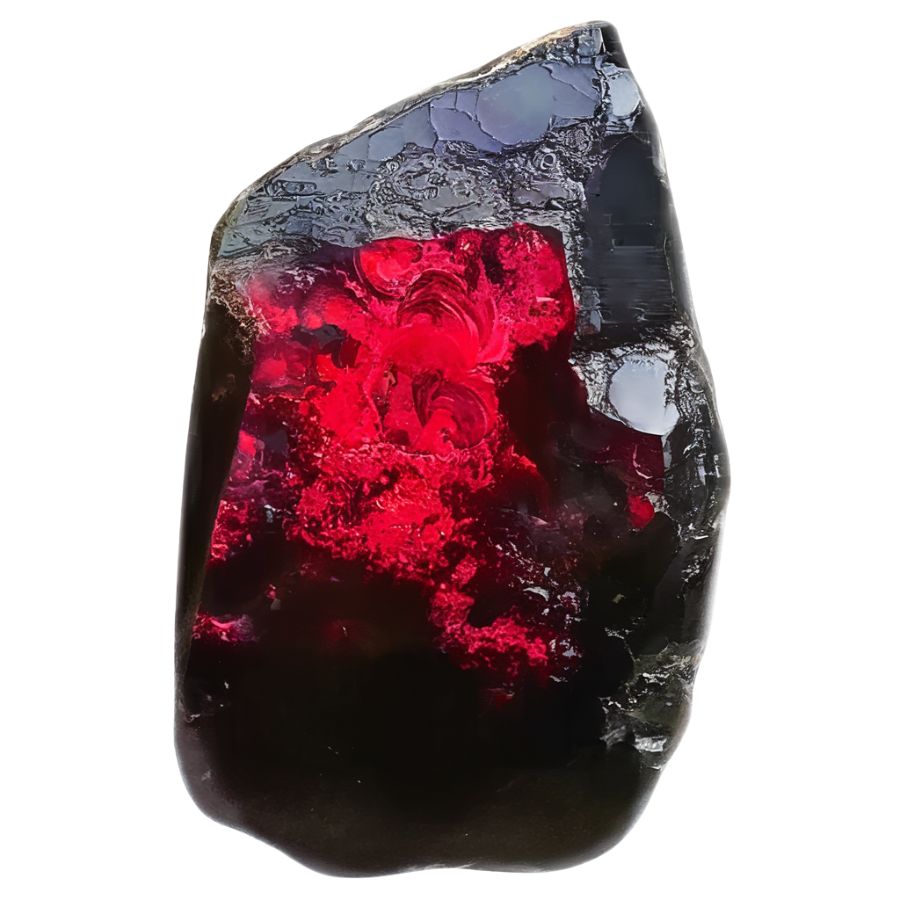
Pyrope garnet captivates with its intense red-to-purplish-red color. The color is so pure and vibrant that some specimens have earned the nickname “Cape Ruby.”
This stone has excellent clarity, rarely showing visible inclusions. When present, some inclusions can create a fascinating star effect called asterism, where a six-pointed star seems to float on the surface.
The stone appears especially vivid when cut into clean, geometric shapes that maximize light return.
Some pyropes show a subtle color shift, appearing slightly different under natural and artificial light. This subtle change adds to their charm and makes each stone unique.
Their exceptional clarity and lack of internal flaws make them particularly appealing to collectors.
Spessartine Garnet
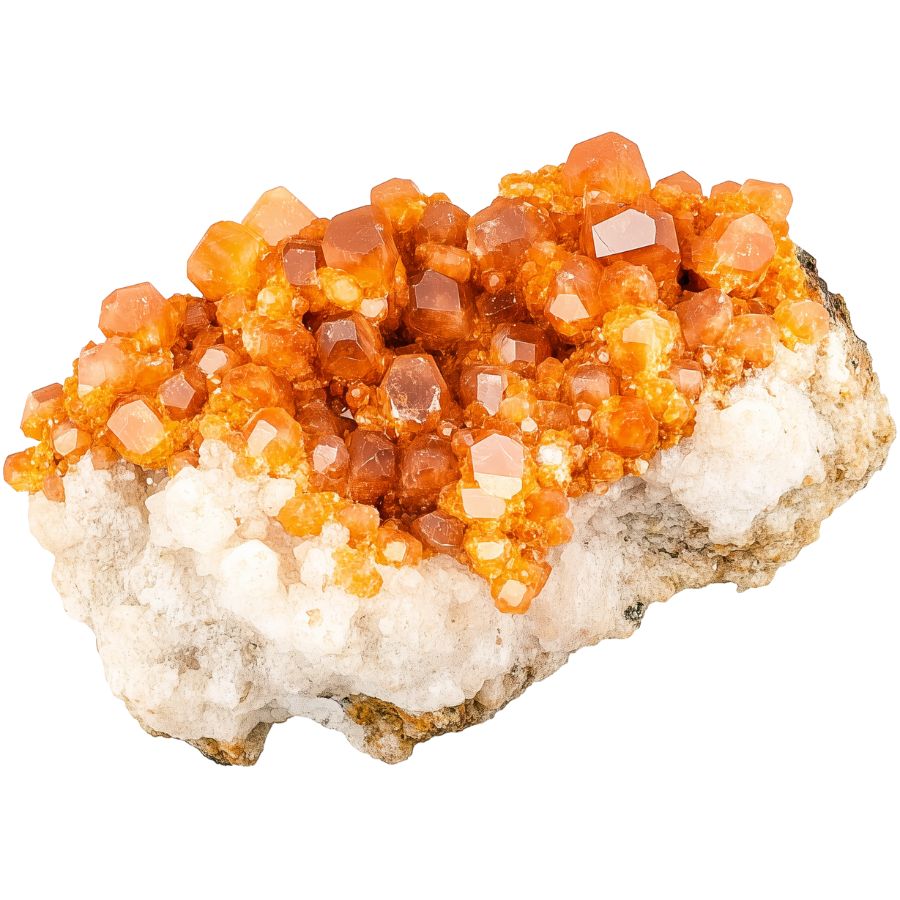
Spessartine garnet showcases a stunning range of orange colors, from bright mandarin to deep reddish-orange. The most valued pieces display a pure, vivid orange. This distinctive coloring comes from manganese in its chemical makeup.
When cut properly, spessartine exhibits bright flashes of light and exceptional sparkle. Some stones show a subtle “sugar-like” texture that creates a soft, internal glow.
Pure spessartine is rare in nature, making high-quality specimens particularly valuable. Most stones contain trace elements that create subtle color variations.
The stone’s transparency ranges from completely clear to slightly cloudy. Clear specimens are highly prized, but some collectors prefer stones with slight cloudiness that creates an interesting depth effect.
Andradite Garnet
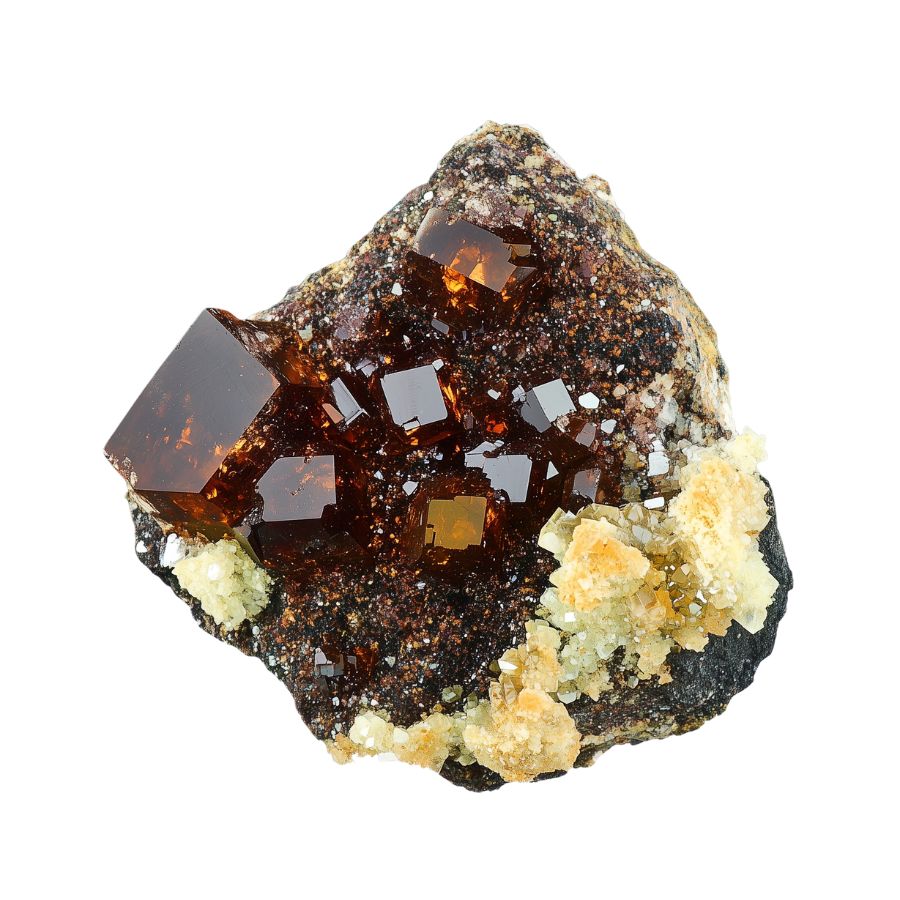
Andradite garnet displays the widest color range of all garnets. Colors span from bright green to yellow, brown, and black. The green variety, known as demantoid, is particularly treasured for its brilliant, emerald-like color and exceptional sparkle.
This stone has the highest dispersion rate of all garnets, even higher than diamond. This means it breaks light into rainbow colors more effectively, creating fascinating fire and brilliance.
Some andradite garnets contain unique internal features called “horsetail” inclusions. These fine, needle-like patterns are actually desired by collectors and add to the stone’s value.
The stone’s surface has a bright, glass-like luster that enhances its natural beauty. Some specimens exhibit unique optical features such as asterism (star-like patterns) and chatoyancy (cat’s eye effect), which further enhance their visual appeal.
Grossular Garnet
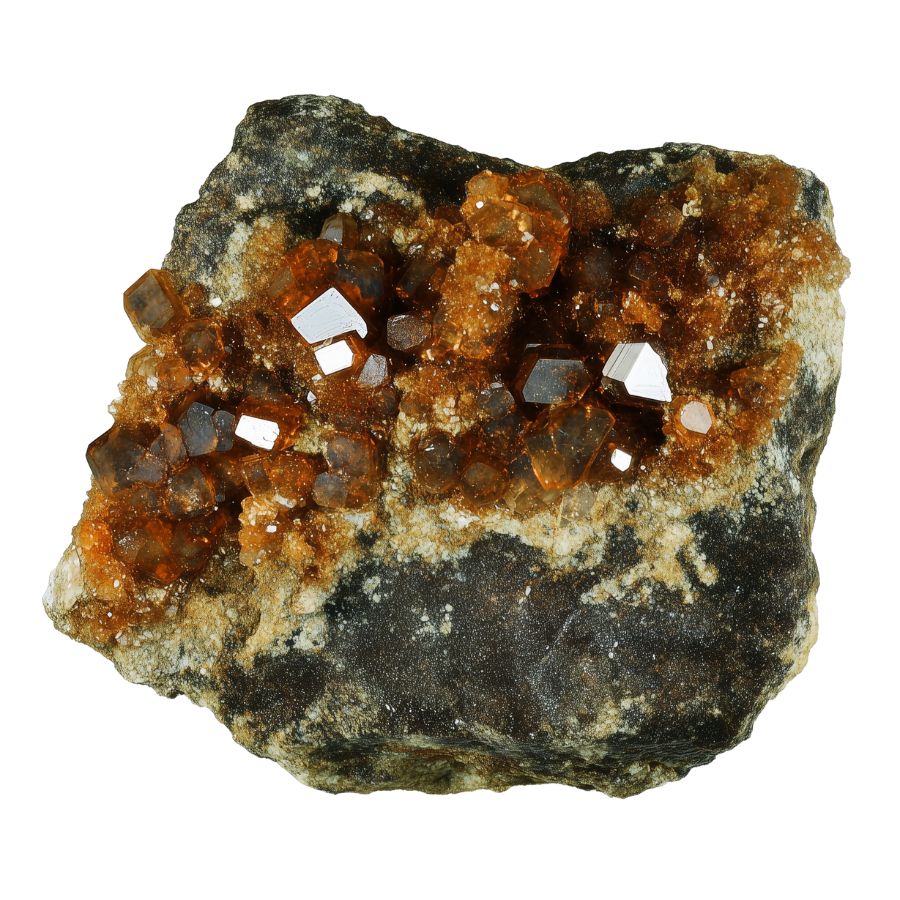
Grossular garnet comes in an amazing range of colors – from green and yellow to pink, orange, and even colorless. The most striking feature is the presence of internal swirls and streaks that create unique patterns within each stone.
The stone’s surface has exceptional brilliance that rivals expensive gems like emeralds. Light bounces through it beautifully, creating bright flashes and sparkles.
A special variety called Mint Garnet glows under ultraviolet light, creating an otherworldly effect. This unusual property makes it particularly interesting to collectors. The stone’s clarity is typically excellent, with few visible impurities.
The presence of trace elements like chromium and vanadium creates its varied colors. These elements mix in different amounts, resulting in subtle color variations that make each stone unique.
Some pieces show color zoning, where different shades blend together in distinct patterns.
Uvarovite Garnet
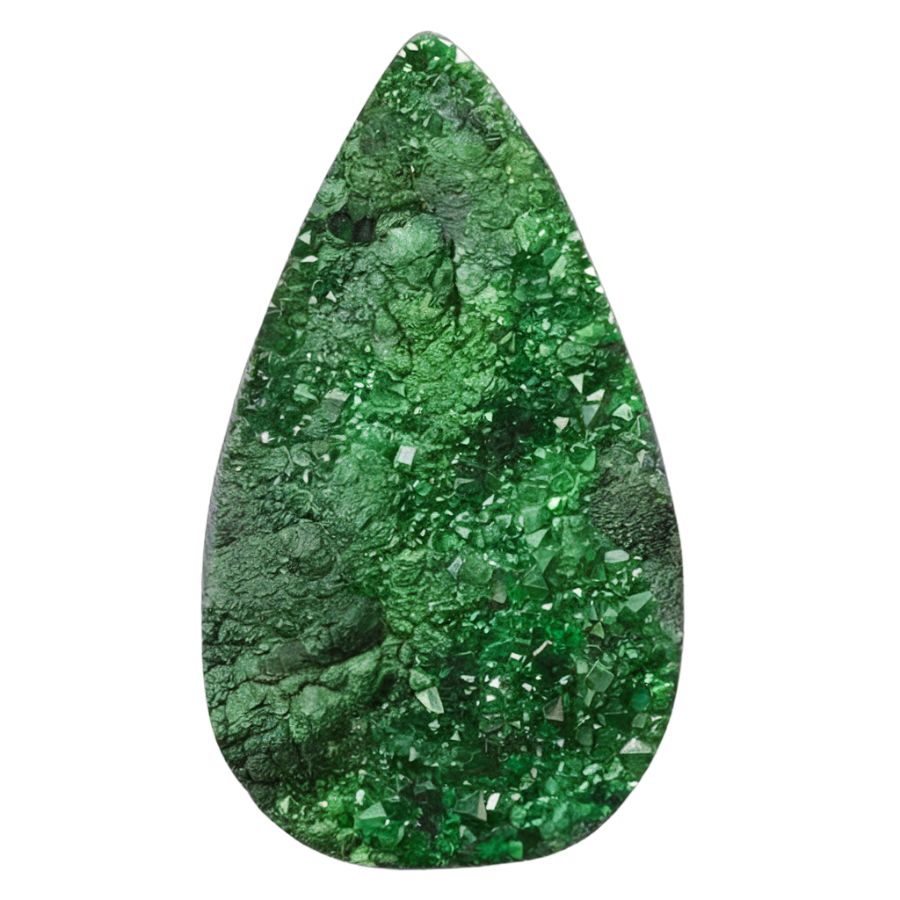
Uvarovite garnet displays a striking emerald-green color that remains consistent in all specimens. Unlike other garnets, where green hues may arise from chromium impurities, uvarovite’s green is inherent to its composition.
Instead of forming large crystals, uvarovite typically grows in clusters of tiny crystals. These clusters, called druzy, create sparkling surfaces that look like green sugar coating the rock beneath.
Under ultraviolet light, it shows an unexpected red glow, adding another layer of interest for collectors. This fluorescence is a unique feature not commonly found in other garnets.
These stones rarely grow large enough for traditional gem cutting. However, their natural crystal formations are so beautiful that they’re often left in their original state. The tiny crystals catch light from multiple angles, creating a dazzling display.
Rhodolite Garnet
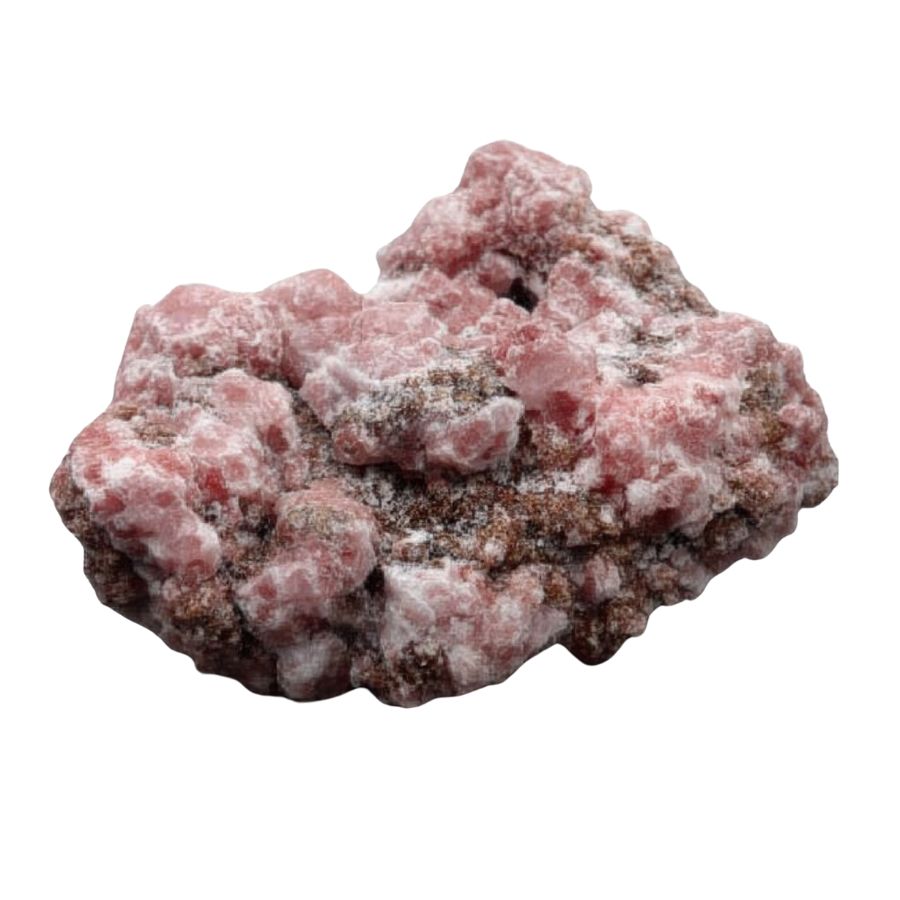
Rhodolite garnet stands out with its beautiful purple-red to raspberry-pink colors. The colors can shift between purple and red depending on the lighting, creating an interesting play of hues. This color range makes it distinctly different from the deeper reds of other garnets.
The stone’s clarity is typically excellent, with very few internal features visible to the naked eye. The surface has a glass-like shine that enhances its natural beauty.
What makes rhodolite special is its mixed composition of two different garnet types. This mixture creates its unique color range and optical properties. The stone often shows stronger color saturation in its center, fading slightly toward the edges.
Rhodolite garnet is particularly valued for its vibrant colors that can mimic more expensive gemstones like rubies and amethysts, making it a popular choice among collectors and jewelers alike.
Hessonite Garnet
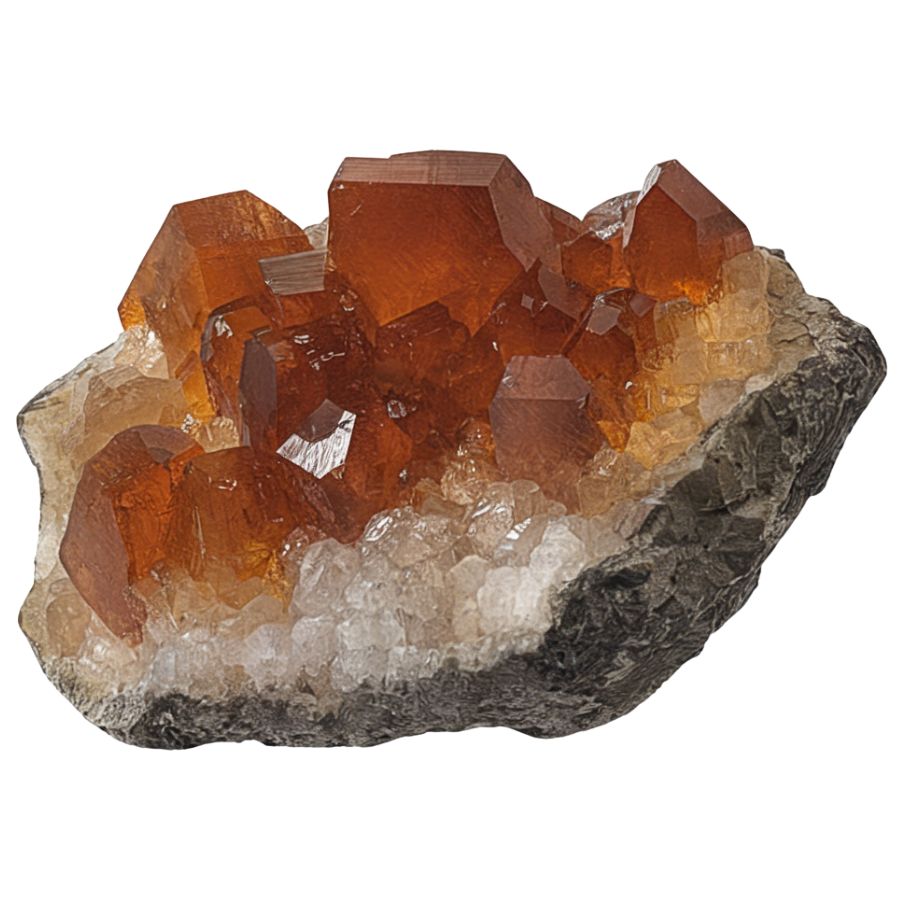
Hessonite garnet showcases warm honey-to-cinnamon colors, ranging from golden yellow to deep reddish-brown. Some pieces display hints of purple, creating complex and appealing color combinations.
Inside the stone, you might find interesting patterns created by tiny needle-like crystals. Unlike many gems where inclusions reduce the value, these internal features are appreciated in Hessonite. They create unique patterns that make each stone one-of-a-kind.
The stone’s transparency varies from crystal clear to slightly cloudy. This variation can create interesting effects, especially when light passes through the stone. Some pieces show a subtle glow that seems to come from within.
High-quality hessonite stones are relatively uncommon, especially in larger sizes. Their warm colors and unique internal features make them particularly interesting to collectors.
Tsavorite Garnet
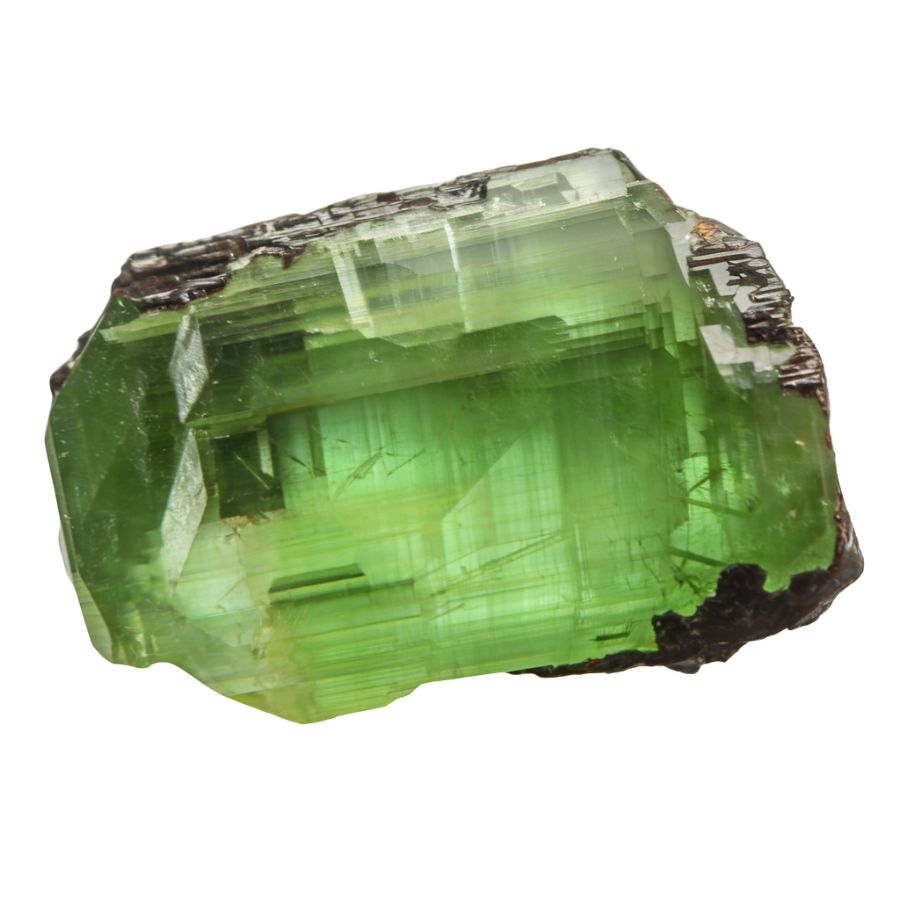
Tsavorite garnet displays a brilliant green color that ranges from bright lime to deep forest green. This stunning color comes from tiny amounts of chromium and vanadium in the stone.
The green is so pure and vibrant that it often matches or surpasses the color of fine emeralds. The surface has a glass-like shine that makes the stone look alive with movement.
Each tsavorite has its own personality in terms of color depth and brightness. Some stones show subtle color changes under different lighting, while others maintain a consistent deep green.
Star Garnet
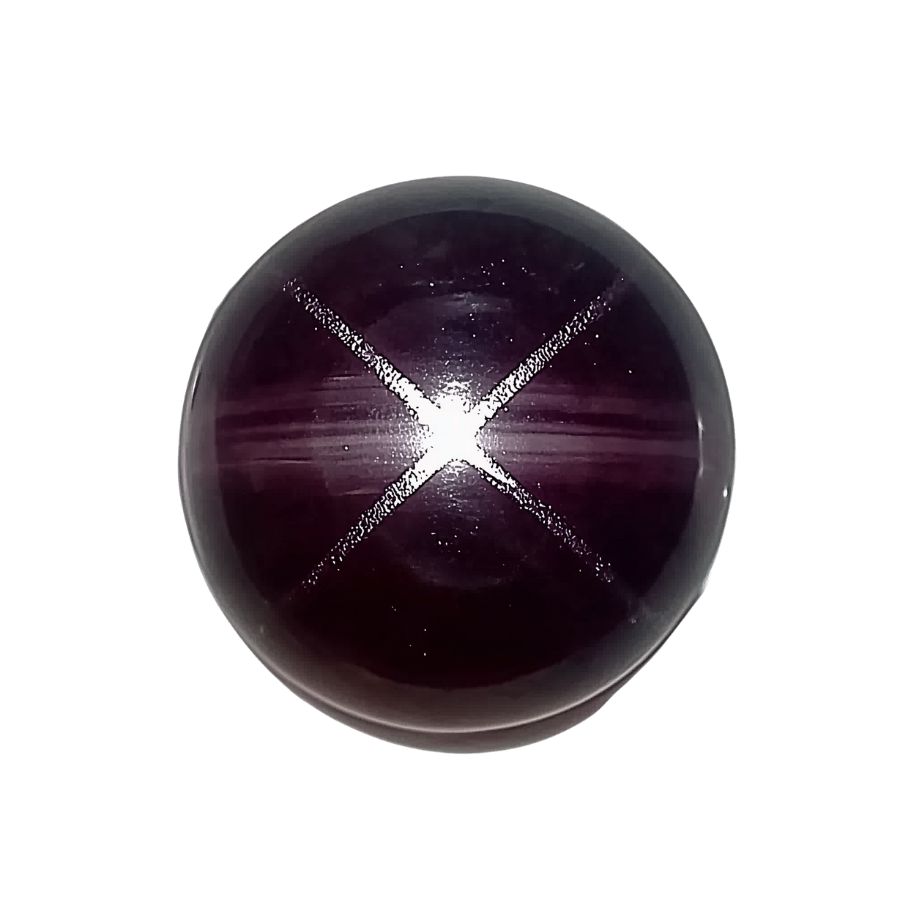
Star garnet shows a fascinating light pattern that looks like a star floating on its surface. This effect, called asterism, comes from tiny needle-like crystals inside the stone. The star usually has four or six rays that move as you turn the stone under light.
The stone’s color is typically deep red to purple-red, often with brown undertones. When polished into a smooth, rounded shape, the star effect becomes more prominent.
The best specimens show sharp, well-defined star rays against a rich, even background color. These stones are quite special because not all garnets can form stars.
The right conditions during formation must exist for the star effect to develop. The tiny crystals inside must align perfectly to create the star pattern. The star effect is natural and permanent – it won’t fade or change over time.
What Rough Garnets Look Like?
Garnets display unique identifying traits when found in their raw, natural state. Look for these distinguishing features:
Look for Distinctive Angular Shapes
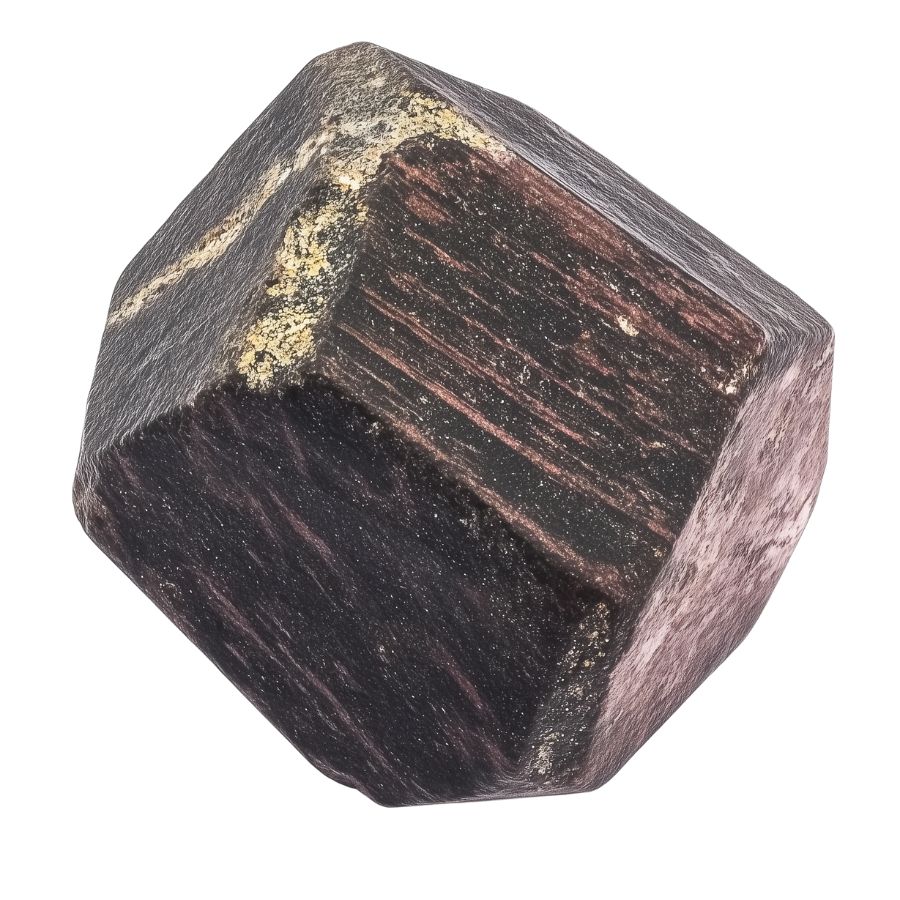
Raw garnet typically forms in dodecahedral or trapezoidal crystal shapes. Think of it like tiny, naturally-formed geometric shapes.
Unlike smooth river rocks, rough garnets have sharp edges and flat faces. Even when broken, they tend to maintain these angular patterns. You’ll often spot them as chunky, block-like crystals that look like they’ve been roughly carved.
Check the Color Range and Transparency
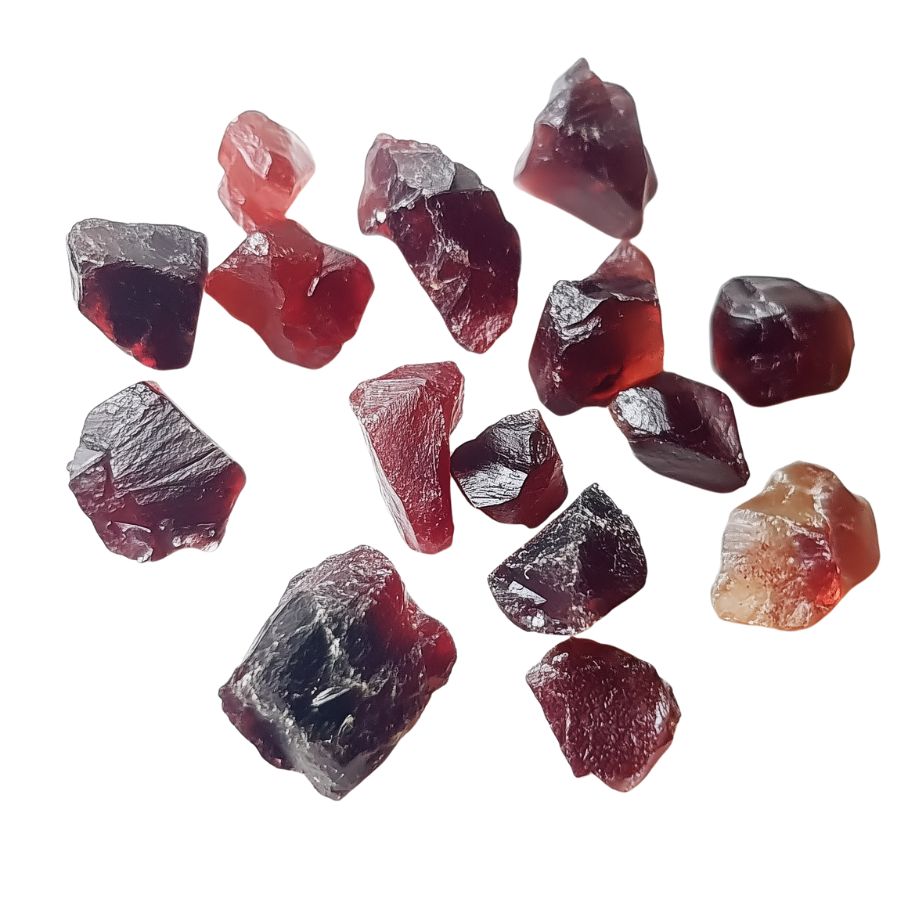
Garnets aren’t just red! Look for deep wine colors, but also keep an eye out for orange-brown, green, or even black varieties.
Hold it up to light – rough garnets often show some translucency at the edges, even if the center seems opaque.
Examine the Surface Texture
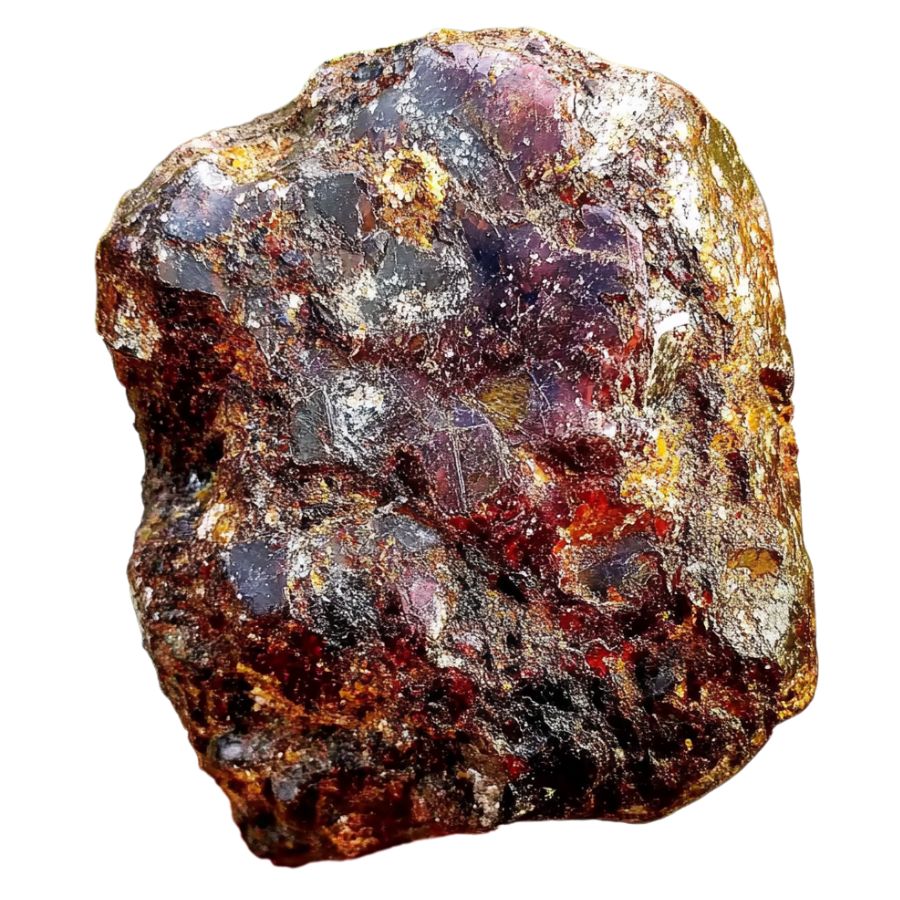
Raw garnets have this unique, almost greasy-looking surface luster. Not shiny like glass, but more like wet plastic.
Run your finger over it – you should feel a smooth yet slightly waxy texture. If it’s been weathered, the surface might be slightly pitted or rough, but you’ll still see that characteristic luster in protected areas.
Test the Hardness and Toughness
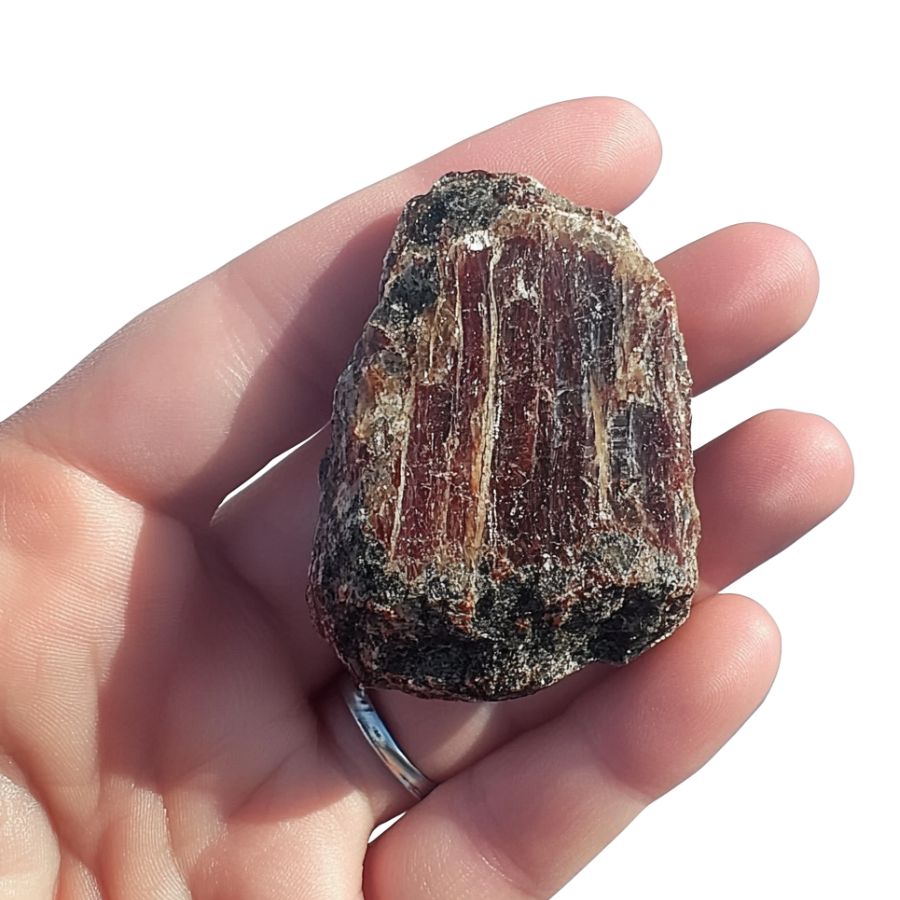
Here’s a quick field test: garnets can easily scratch a penny but won’t scratch quartz. They’re surprisingly heavy for their size – noticeably heavier than a similar-sized piece of quartz or feldspar. Don’t be fooled by lighter stones that look similar!
Tips on Where to Look
To increase your chances of finding garnets, focus your search on these favorable areas:
Metamorphic Rock Outcrops

Look for dark-colored metamorphic rocks, especially schist and gneiss. These rocks often have visible layers or bands.
Garnets appear as dark red or brownish-red crystals embedded in the rock. Common near hiking trails and road cuts where metamorphic rocks are exposed.
Stream Beds & Gravel Banks
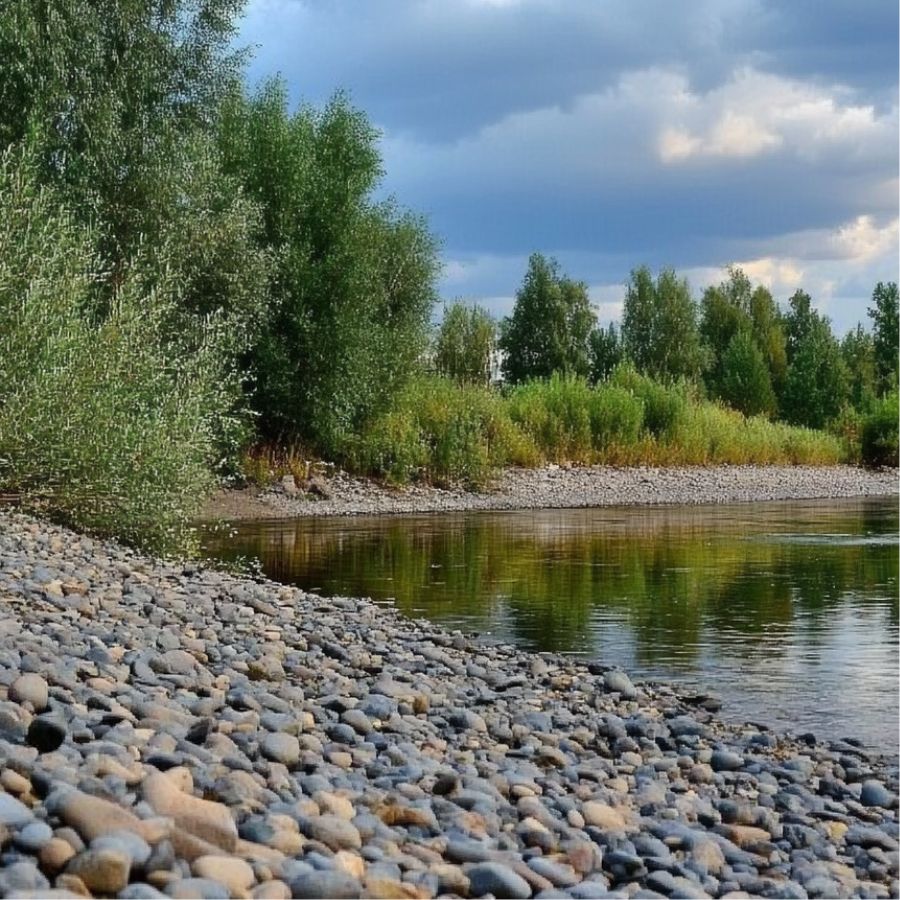
Check gravel deposits in streams, especially after heavy rains. Garnets are heavier than most minerals, so they concentrate in stream bends where water slows down.
Use a pan or sieve to sort through the gravel, keeping an eye out for the distinctive reddish crystals that glimmer when wet.
Pegmatite Areas
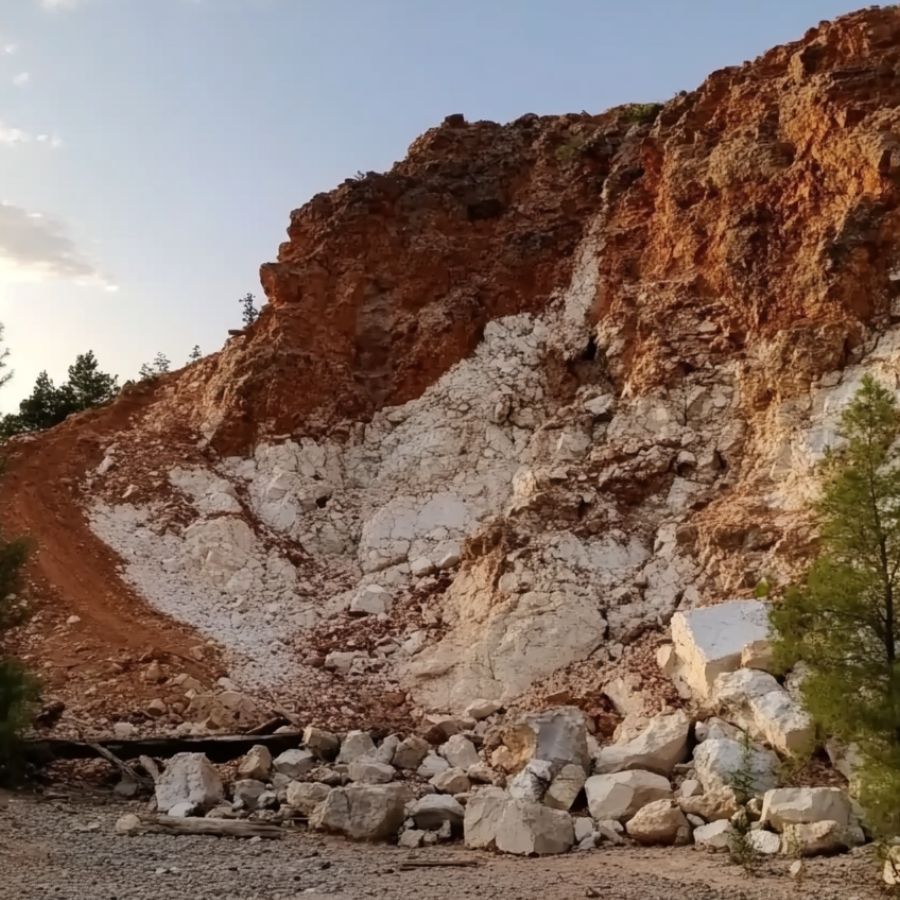
Search around pegmatite formations, which are coarse-grained igneous rocks that sometimes form large crystal pockets where beautiful garnet specimens can be found nestled among other minerals like mica and feldspar.
These areas often have scattered surface rocks and exposed cliff faces that weather over time, releasing garnet crystals.
Old Mining Areas
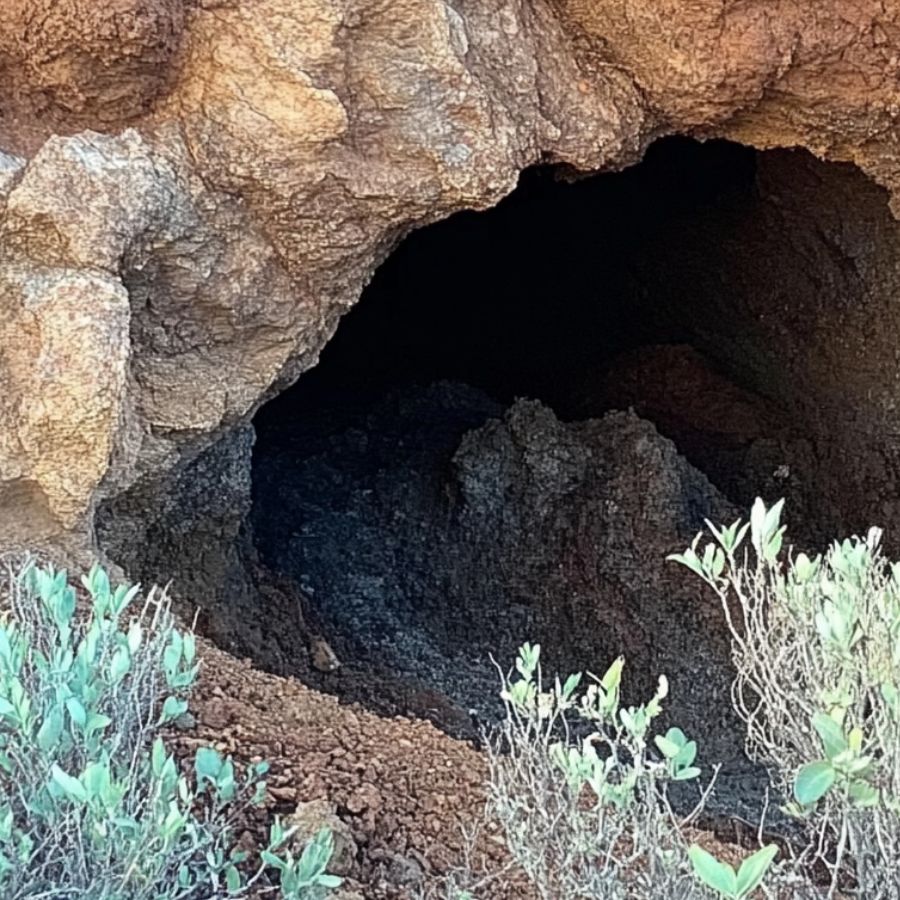
Explore permitted public mining dumps and tailings piles near historical mica or feldspar mines, where garnet was often discarded as a byproduct during past mining operations and can still be found in abundance among the leftover material.
The types of Garnet you can find around the state
The types of Garnet mostly found in California are: Spessartine Garnet, Almandine Garnet, Grossular Garnet, and Andradite Garnet.
These garnets are valued for their unique characteristics and vibrant colors, ranging from deep reds to greens and oranges. They are commonly found in metamorphic and igneous rocks, making them a significant part of California’s mineral diversity.
Each type contributes to the state’s reputation as a source of high-quality gemstones.
Tools You Will Need
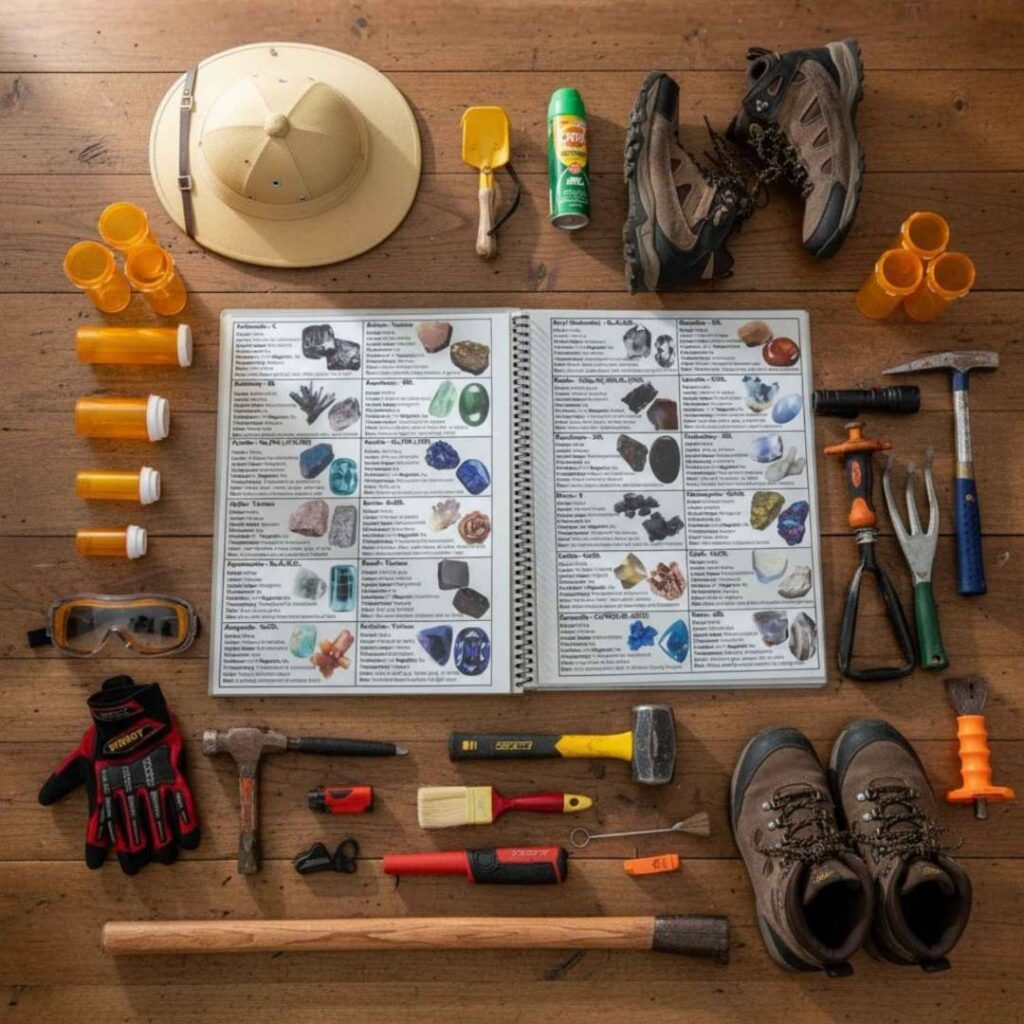
Garnet hunting feels a bit like searching for hidden treasure. You don’t need a lot of gear to get started, just a few simple tools that help you spot and collect the good pieces. These basics keep things easy, light, and fun for beginners.
A Trustworthy Field Guide – Essential
A dependable option is Rock Chasing’s California Rocks & Minerals Identification Field Guide, a rugged, field-ready companion built for the way rockhounds actually explore.
It earns its spot in your pack for a few simple reasons. First, the coverage is broad enough to matter, with 120+ California rocks and minerals supported by more than 300 clear photos.
Identification becomes faster and far more accurate because the visuals and quick-reference facts are laid out simply, which helps when you are crouched beside a creek or brushing off dust in a quarry.
Each laminated, waterproof page holds up to mud, grit, and sudden weather, and the steel binding is designed for long-term use in real field conditions. You can drop it, wipe it clean, and keep going.
It’ i’s compact, accurate, kid-friendly, and trusted by collectors across the state, which makes it a steady partner for anyone who spends their time hunting, discovering, and learning from California’s rocks.
Geologist’s Hammer – Essential
A geologist’s hammer helps you loosen hard soil and chip away at rough spots in rock. Garnets often hide in tougher material, so having something sturdy to break small chunks free makes the job much easier. It gives you better control and lets you work around a pocket without damaging the crystals inside.
Classifying Brush – Recommended
A small brush helps you clean dirt off fresh finds so their color and shape stand out. Garnets can look dull when covered in dust, and brushing them off helps you decide if the spot is worth exploring further.
Bucket or Tote – Optional
A lightweight bucket or small tote keeps your finds safe and easy to carry. Beginners don’t always think about storage until their pockets are full, so this simple option helps you stay organized without adding much weight.
Foldable Shovel – Essential
A compact shovel lets you dig in loose soil, scoop out gravel, and clear small pits. Many garnet-bearing spots require light digging rather than breaking rock, so this gives you a quick way to reach layers where garnets collect.
Some Great Places To Start
Here are some of the better places in the state to start looking for garnet:
Always Confirm Access and Collection Rules!
Before heading out to any of the locations on our list you need to confirm access requirements and collection rules for both public and private locations directly with the location. We haven’t personally verified every location and the access requirements and collection rules often change without notice.
Many of the locations we mention will not allow collecting but are still great places for those who love to find beautiful rocks and minerals in the wild without keeping them. We also can’t guarantee you will find anything in these locations since they are constantly changing.
Always get updated information directly from the source ahead of time to ensure responsible rockhounding. If you want even more current options it’s always a good idea to contact local rock and mineral clubs and groups
San Gabriel River
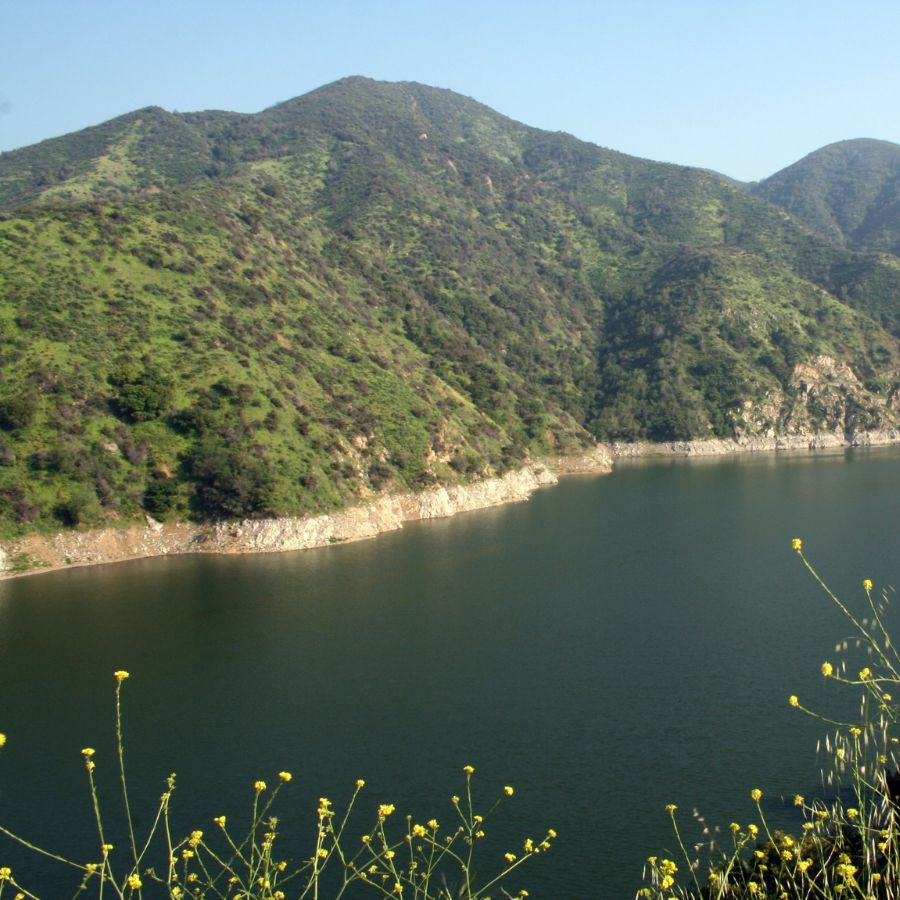
Nestled in the San Gabriel Mountains, the San Gabriel River is a well-known spot for rockhounds searching for garnets. The river’s waters have carried these deep-red gemstones from the surrounding rocks, depositing them in gravel bars and sandbanks.
Many collectors have found small but beautiful garnets in the East Fork of the river, especially near the Sheep Mountain Wilderness.
The best way to search is by panning in slower-moving sections of the river or sifting through gravel near bends and exposed rock formations. Since the river flows through a rugged canyon, bring sturdy boots and plenty of water.
If your kids constantly ask “What’s this rock?”, this guide finally gives you an answer you don’t have to Google later. Quick photos, simple descriptions, and rugged pages make ID’ing rocks fun instead of frustrating.
🔍 Fast visual matching—no geology background needed
💦 Wipe-clean pages made for creeks, beaches & dirt
📚 Simple explanations for beginners of all ages
🌄 Great for California hikes, creek beds & camping trips
Clear Creek Area
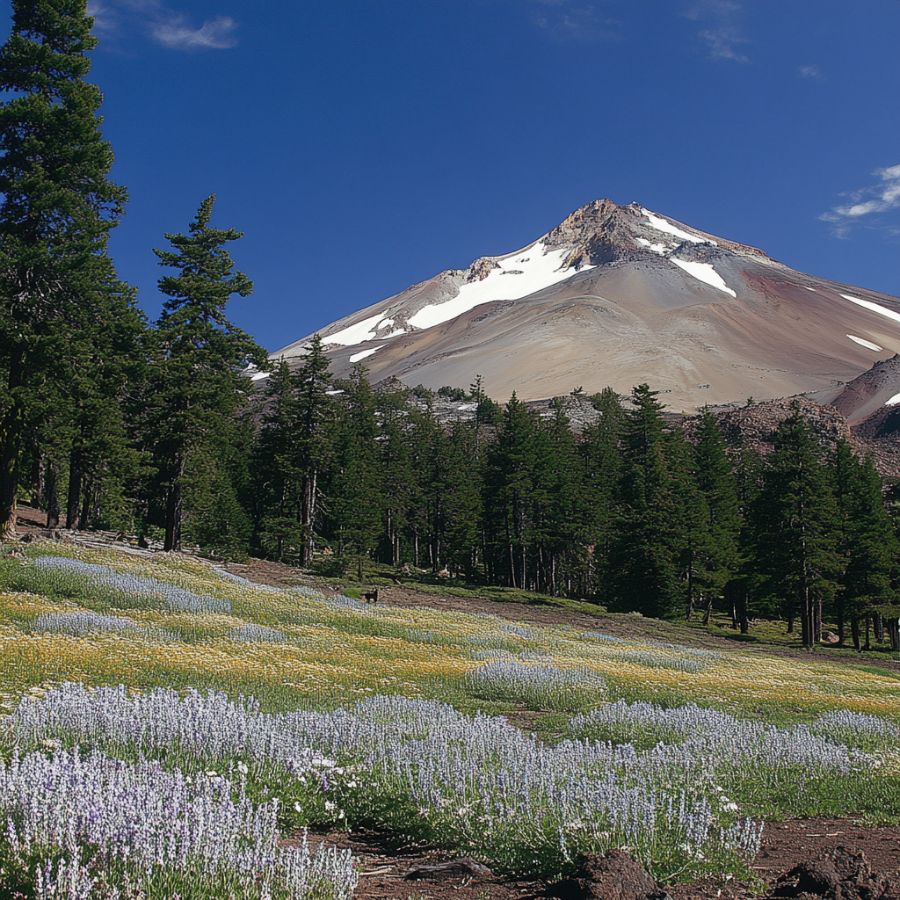
The Clear Creek area in San Benito County is renowned for its rich geological diversity, particularly within the Clear Creek Management Area (CCMA). This region is notable for its serpentine landscapes, which harbor a variety of rare minerals.
Among these is benitoite, California’s state gem, uniquely found in gem-quality form within this locale.
Additionally, the area is known for minerals such as jadeite, cinnabar, and andradite garnets. The Green Fire Mine, located near Santa Rita Peak within the CCMA, is specifically noted for its andradite garnet specimens.
Garnet Hill
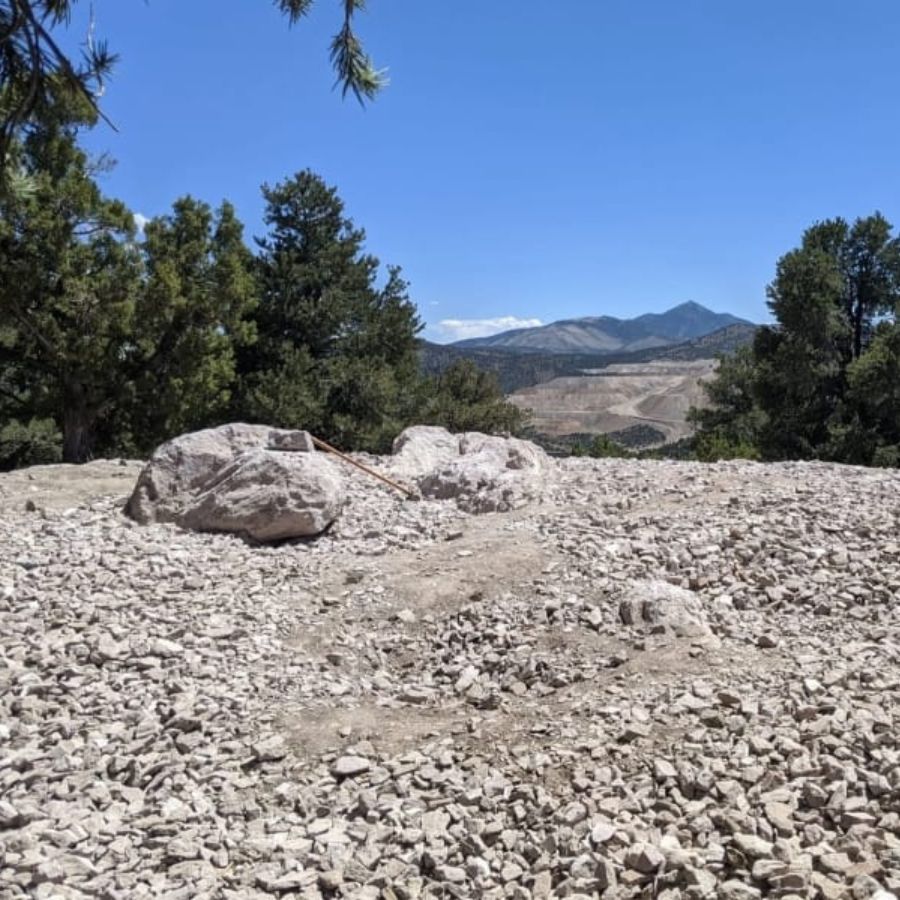
Garnet Hill, as its name suggests, is a hotspot for garnet hunting. Located in Riverside County, this small but mineral-rich hill is well known for producing almandine garnets.
The garnets here are usually found within schist and gneiss rock formations, making them slightly more challenging to extract. A rock hammer and chisel will be useful tools for breaking open rock layers to reveal the deep-red crystals inside.
Some loose garnets can also be found in the surrounding soil, especially after rain. Garnet Hill is accessible by dirt roads, but they can get rough, so a high-clearance vehicle is recommended.
While searching for garnets, keep an eye out for other minerals like feldspar and tourmaline, which have also been found in the area.
Afton Canyon
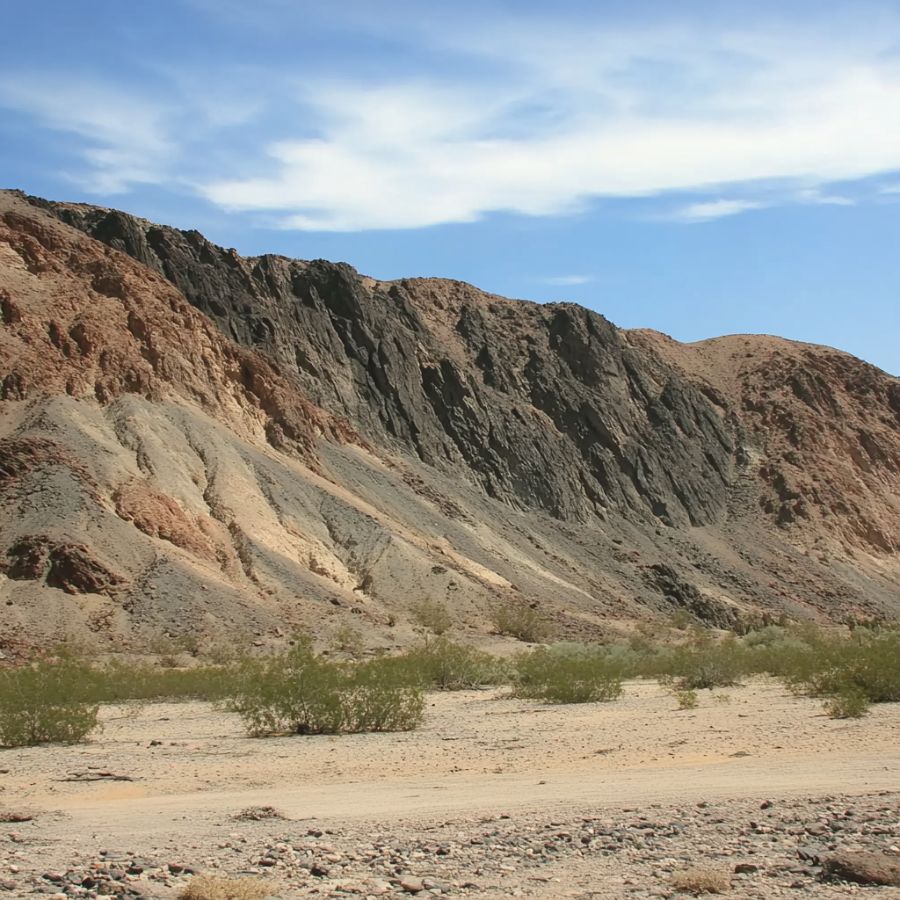
Afton Canyon, often called “California’s Grand Canyon,” is a dramatic desert landscape known for its striking rock formations and hidden mineral treasures. Garnets in this area can be found within ancient river deposits and eroded rock formations.
Rockhounds often search the gravel beds along the Mojave River, where garnets have been washed downstream over time. The gems here vary in size, but some collectors have discovered sizable and well-formed specimens.
Afton Canyon is also known for its colorful agates and jaspers. Since this is a remote area, it’s best to go prepared with supplies and a detailed map.
Plumas National Forest
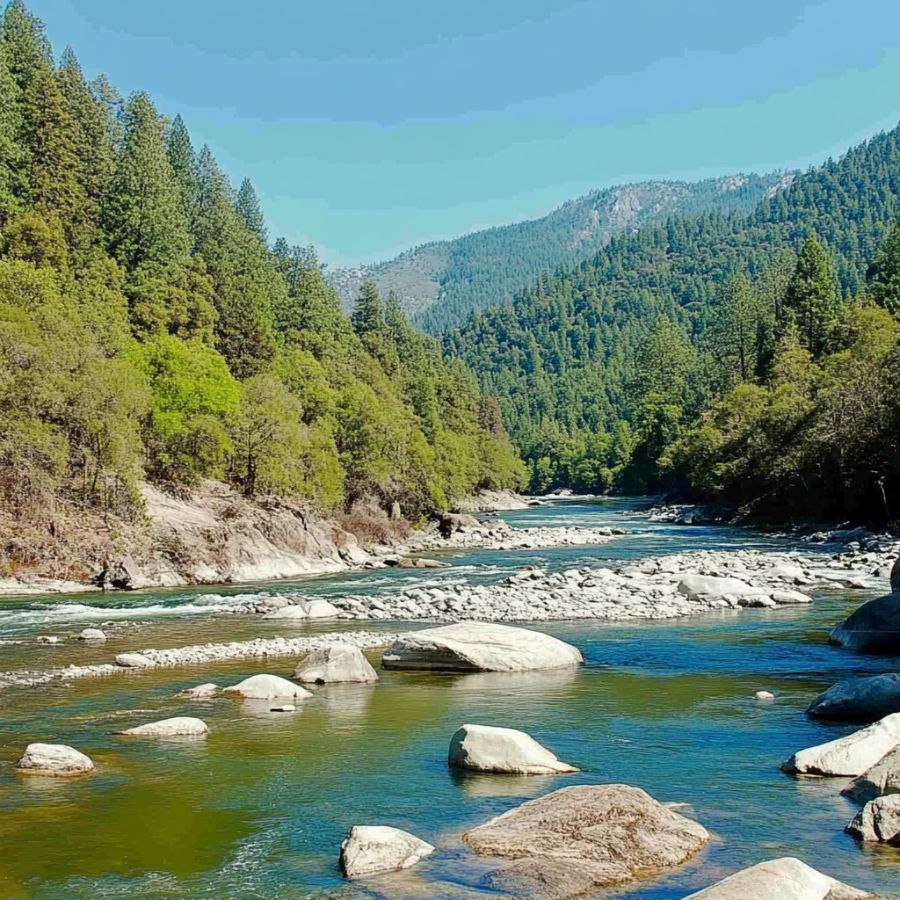
Plumas National Forest, situated in Plumas County, is characterized by its diverse ecosystems, encompassing dense forests, meadows, and numerous water bodies. The forest is a popular destination for outdoor enthusiasts, offering activities such as camping, fishing, hiking, and wildlife viewing.
Geologically, the area is part of the Sierra Nevada range and is known for its metamorphic and igneous rock formations. Notably, the region contains marble deposits, with Marble Cone being a significant feature in the southwestern part of the county.
The area around Spring Valley Mountain, specifically Garnet Ridge, is a great place to search for garnets.
Places Garnet has been found by County
After discussing our top picks, we wanted to discuss the other places on our list. Below is a list of the additional locations along with a breakdown of each place by county.
| County | Location |
| Riverside | Lakeview Mountains |
| Riverside | Jurupa Mountains |
| San Diego | Pala Chief Mine |
| San Diego | Himalaya Mine |
| San Diego | Tourmaline Queen Mine |
| San Diego | White Queen Mine |
| Los Angeles | San Gabriel River |
| Inyo | Owens River |
| Yuba | Yuba River |
| Mariposa | Bear Valley |
| Monterey | Big Sur Coast |
| San Luis Obispo | Moonstone Beach |
| El Dorado | Sierra Nevada Foothills |
| Mono | Bodie Hills |
| Kern | Frazier Park |
| San Bernardino | Red Hill |
| San Bernardino | Pisgah Crater |
| San Bernardino | Big Bear Lake |
| San Bernardino | Lavic Siding |
| Kern | Rand Mountains |
| Los Angeles | Acton Mining District |
| Los Angeles | Antelope Valley |
| San Bernardino | Marble Mountains |
| Imperial | Dome Rock Mountains |
| Imperial | Indian Pass |
| Riverside | Eagle Mountain |
| San Bernardino | Joshua Tree Area |
| San Benito | Panoche Hills |
| Inyo | Trona Pinnacles |
| Tuolumne | Table Mountain |
| San Luis Obispo | Nipomo Mesa |
| San Luis Obispo | See Canyon |
| San Luis Obispo | Shell Creek |
| Kern | Fort Tejon Ranch |
| San Luis Obispo | Soda Lake |
| Riverside | Temescal Mountains |
| San Bernardino | Old Woman Mountains |
| Imperial | Pilot Knob |
| Tulare | Tule River |
| San Benito | San Benito River |
| San Diego | Coyote Creek |
| Inyo | Bishop Creek Area |
| San Bernardino | San Bernardino Mountains |
| Plumas | Butterfly Valley |
| Imperial | Salton Sea Shore |
| San Luis Obispo | Carrizo Plain |
| San Benito | Pinnacles National Monument |

